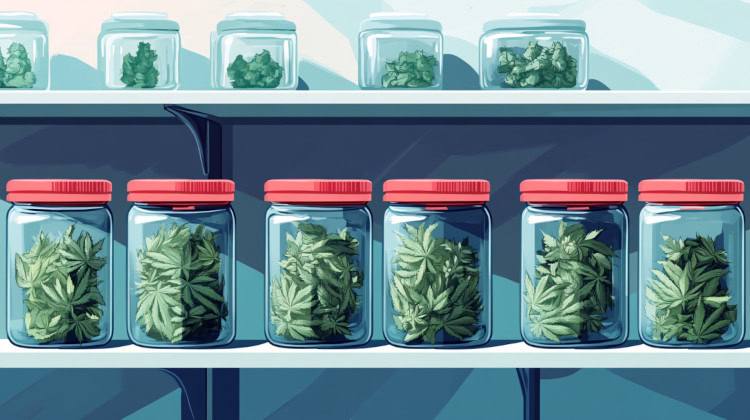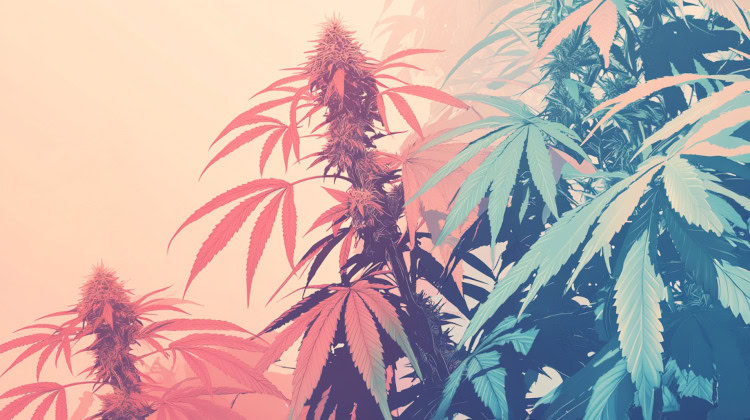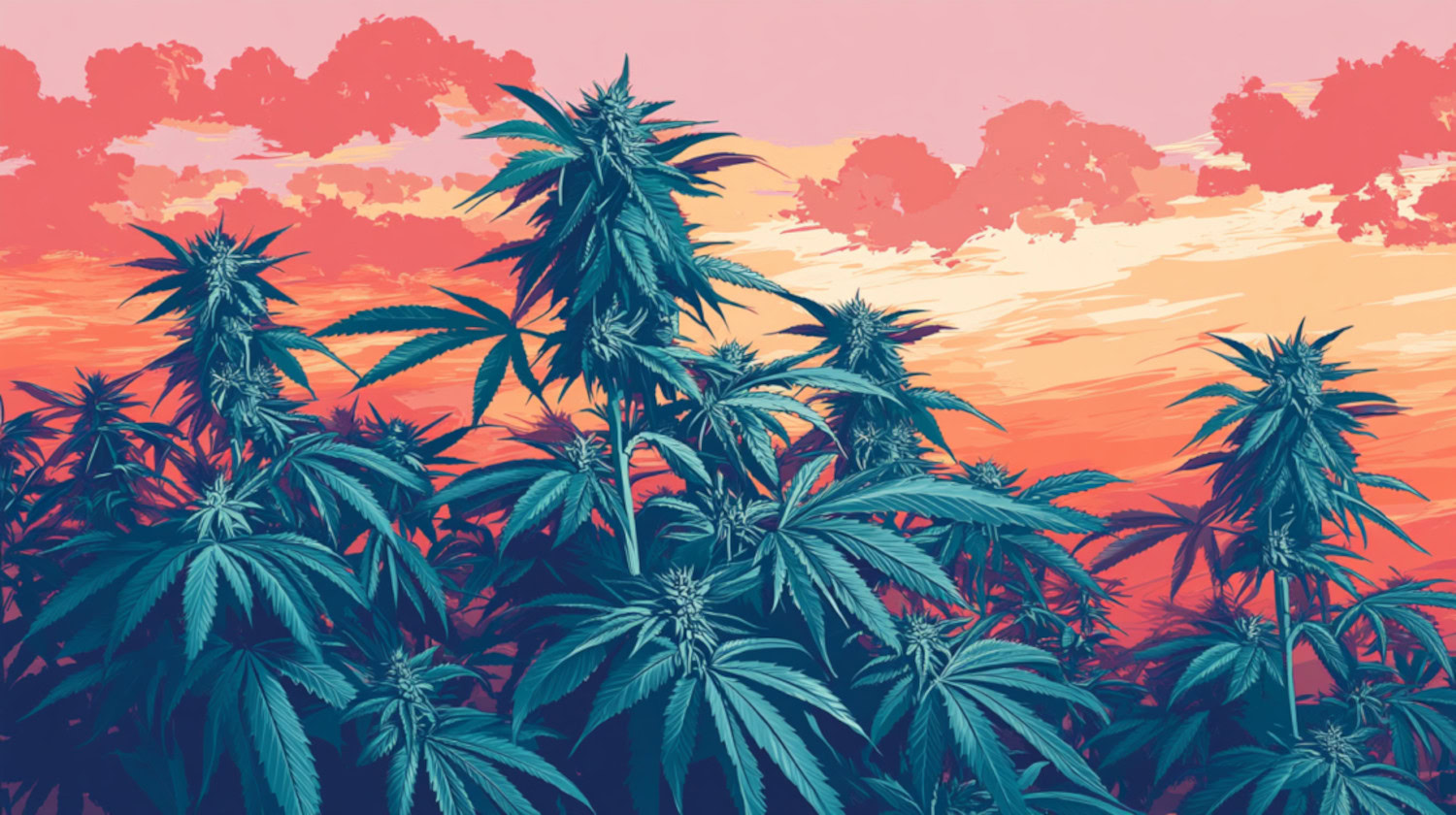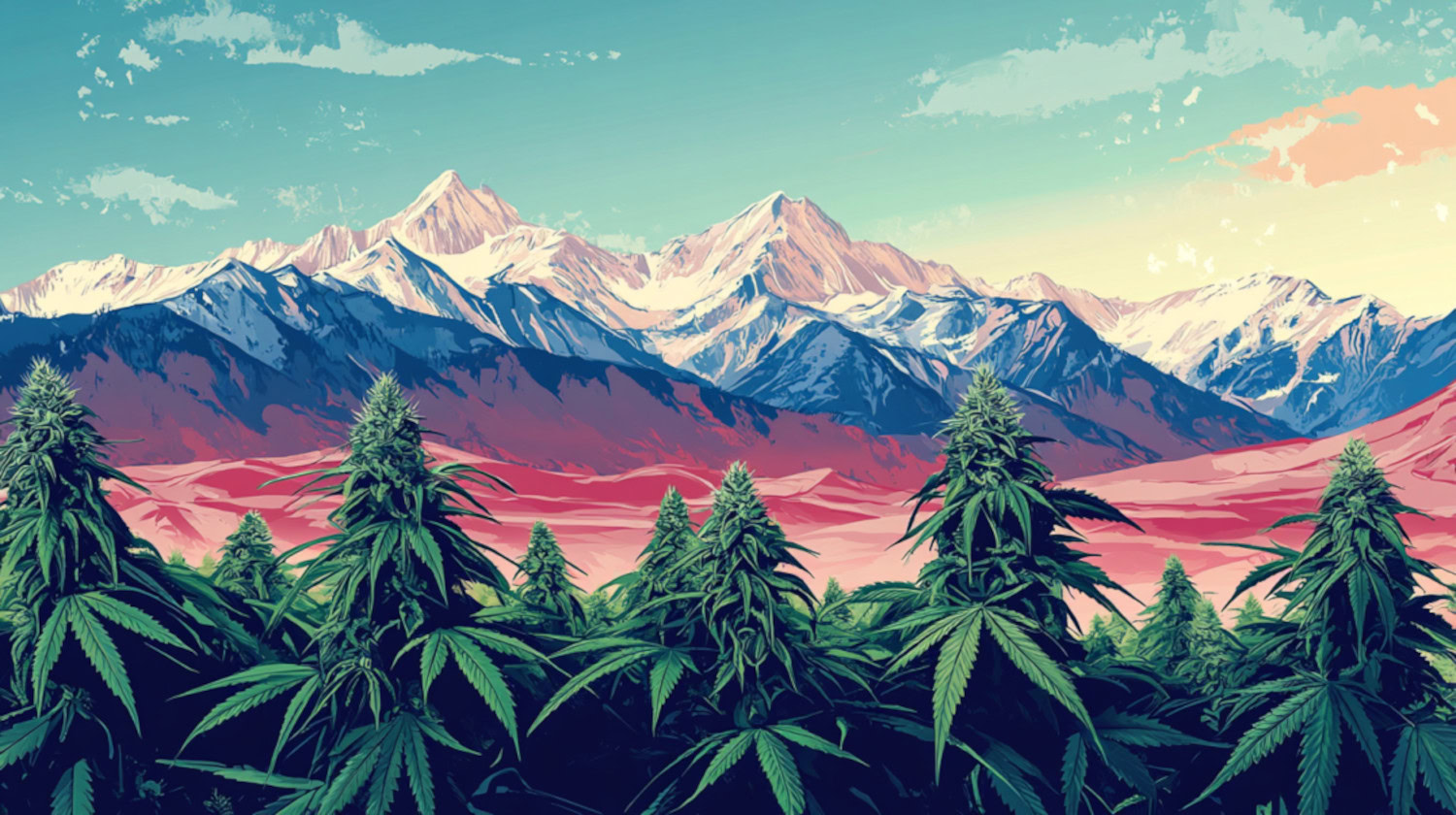In This Article
- The Medical Benefits of High-THC Strains
- Reasons to Avoid High-THC Strains
- What Determines Strains with the Highest THC Content?
- What Strain Has the Highest Percentage of THC?
- What Strain Has 30% THC?
- Which THC Strain is the Strongest?
- What is Top Shelf Strain THC?
- Factors That May Influence the THC Experience
- Considerations for Growing High-THC Strains
- Lighting
- Temperature
- Harvesting
- Confirming the Potency of High-THC Strains
- References
Key Takeaways
- The highest THC strains may have benefits for the conditions with symptoms best managed with THC, as opposed to CBD.
- High-THC strains aren’t always better, and the risk of over-intoxication is high. More balanced strains rich in terpenes usually offer a more positive experience.
- The highest THC strains include: Alien Mints, Blueberry Pancakes, California Octane, and GMO.
THC spent a long time lingering in the shadows behind a veil of stigma and misconception. Fortunately, THC lovers are now starting to see their favorite cannabinoid get the praise it deserves as a therapeutic powerhouse. Modern scientific advancements have shed new light on this intoxicating compound's diverse potential for therapeutic benefits, which many medical cannabis patients rely on for wellness and healing.
The rising popularity of high THC strains coincides with major increases in THC levels over the last few decades. Human intervention is making it possible to breed cannabis strains with highly distinct effects. This presents consumers with miscellaneous cultivars showcasing a broad spectrum of THC potencies, ranging from light to sensationally intoxicating.
Berlin is home to some of the most potent weed strains on the planet, many of which have migrated to the United States and beyond. After seizing a batch of black-market-cultivated cannabis in 2010, an FDP politician revealed that the flower reached a peak value of 44% THC. Percentages may fluctuate based on various factors, so it’s worth knowing about the highest THC strains to ensure satisfactory symptom relief.
The Medical Benefits of High-THC Strains

Delta-9-tetrahydrocannabinol, better known as “THC,” is the most abundantly occurring intoxicating cannabis compound. It is renowned for producing a “high” that may induce feelings of calmness, euphoria, relaxation, and more. As time progresses, THC may oxidize and transform into cannabinol (CBN), which is another cannabinoid that produces mild sedation.
Although THC is commonly consumed for recreational purposes, many patients also use it to help ease anxiety, insomnia, migraine, nerve damage, rheumatoid arthritis symptoms, and more. THC is often recommended to relieve the side effects of cancer chemotherapy treatment, including appetite loss, nausea, pain, and vomiting. THC's relaxing and anti-inflammatory properties may also soothe multiple sclerosis (MS) symptoms, such as spasticity and pain.1
Reasons to Avoid High-THC Strains

Due to THC's intoxicating element, consumers may experience temporary side effects after consuming THC. While the effects are non-fatal, in rare cases, extreme over-intoxication can lead to temporary psychiatric symptoms.2 Regardless, the existing evidence does not confirm a direct link between excessive cannabis use and psychiatric disorders, such as schizophrenia.3
Some consumers may want to avoid high THC strains due to frequently reported side effects, which include:2
- Anxiety
- Decreased motivation
- Dry mouth
- Dizziness
- Drowsiness
- Elevated heart rate
- Increased appetite
- Paranoia
- Poor concentration
- Red eyes
- Short-term memory impairment
- Skewed perception of time
Rare but more concerning side effects include:
- Impaired coordination
- Delusions
- Dizziness
- Hallucinations
- Temporary psychosis
These side effects are all temporary and should subside as soon as the cannabis wears off. If you're concerned, don't hesitate to seek medical assistance.
What Determines Strains with the Highest THC Content?
As our understanding of the interactions between cannabinoids and the human body continues to improve, breeders are infusing their knowledge into strain development. With cross-breeding techniques, cultivar geniuses can tweak and retain the better qualities of certain cultivars to produce some of the highest THC strains.
Genetics plays a central role in THC percentage, which is swayed by numerous factors. Through selective breeding practices, breeders are going beyond to craft brand-new versions of existing strains that can satisfy consumers seeking an elevated THC percentage.
What Strain Has the Highest Percentage of THC?
Thanks to advancements in genetic selection and innovations in growing equipment, cannabis plants are tipping the scales in terms of THC percentage. By dry weight, many plants are surpassing 25% THC. To put a name to the strain with the highest THC, it might be Alien Mints, which tests at 35-42%.
According to Washington state’s I-502 data, Ghost OG (28%+) is one of the most potent strains. However, Brownie Scout tips the scales at 38% THC. It largely depends on who's growing the cannabis and when they choose to harvest it.
What Strain Has 30% THC?
There are almost 800 strains in existence, many of which contain THC. However, there aren't many that are considered the highest THC strains. Reaching well past 25% into 30% THC and above, these strains include:
- Alien Mints (35-42% THC)
- Blueberry Cupcake (28-34% THC)
- Blueberry Pancakes (31% THC)
- Blueberry Crumble (22-30% THC)
- Bobby Wild (24-32% THC)
- California Octane (31-34% THC)
- GMO (28-30% THC)
- Garlic Budder (28-32% THC)
- Hella Jelly (29-35% THC)
- Humboldt Dream (27-30% THC)
- Jelly Donutz (30-35% THC)
- Jenny Kush (30-34% THC)
- Poddy Mouth (24-30% THC)
- Stoopid Fruits (28-31% THC)
- Vanilla Frosting (28-32% THC)
Which THC Strain is the Strongest?
Even if one strain contains more THC than another, it doesn't necessarily mean it’s stronger. After all, it's not just the THC content that determines how hard-hitting a strain's effects are. Minor cannabinoid and terpene composition plays a large role, too, so be on the lookout for the prime selection of cannabis compounds when seeking out the highest THC strain.
Likewise, the entourage effect — the harmonizing interaction between cannabinoids and other compounds like terpenes — may influence a strain’s overall effects. Even other cannabinoids like CBD within a cultivar can play a role in its potency, sometimes intensifying THC’s effects.
What is Top Shelf Strain THC?
Step into any licensed dispensary, and you'll know where to find the store's best-quality, highest THC strains. It's called “top shelf” weed for a reason. Most THC-teeming cultivars have a designated zone above their fellow THC-flecked friends.
Dispensaries usually grade flower by quality: “low shelf,” “mid-shelf,” “top shelf,” and “private reserve.” If a dispensary doesn't have a “private reserve” shelf, you can often find the rarest, upscale, tastiest, smelliest, and most indulgent flower on the “top shelf.”
Factors That May Influence the THC Experience

Everyone's cannabis experience is unique, mainly because each person's biochemistry is different. Age, sex, genetic differences, and underlying medical conditions can influence the effects of the highest THC strains. Potency (e.g., the THC concentration and presence of other cannabis compounds) and dosage also affect the outcome, proving the importance of choosing (or growing) high THC strains wisely.
Pay thought to your tolerance levels based on previous cannabis use when selecting a strain with the highest THC levels. Reviewing the certificate of analysis (COA) is recommended to confirm the contents of dispensary-bought cannabis products. Keep in mind that specific ingredients may amplify THC's mind-altering and sedating effects. Think about your chosen consumption method, too, since THC's effects may be more pronounced or longer-lasting.
Approximately 400 types of medication may produce a chemical reaction when consumed alongside cannabis. If you're concerned about potential drug interactions, it's worth discussing your options with a certified medical marijuana doctor. If you're currently using prescribed medication, you can also input the name of the drug(s) into the online Cannabis Interactions Checker on Drugs.com. Those resources may be useful, but they are by no means a substitute for actual medical advice. Always check with your doctor before combining cannabis and medications.
Considerations for Growing High-THC Strains
Cannabis plants crave an ideal growing environment. During a daily cycle, they need 16 hours of light and eight hours of darkness.
Creating a harmonious growing atmosphere can relieve the plant’s burden of regulating temperature and stomata control, supporting its ability to concentrate on flower and THC production.
There are several elements to consider when growing high-THC weed.
Lighting
The most potent weed strains require the perfect amount of light to churn out the highest THC levels, which can vary by cultivar.4 To maximize THC content, the plant needs to produce extra trichomes — the THC-oozing resin that may induce feelings of euphoria in users — during the flowering stage.
A quality grow kit is paramount for increasing high THC strains, and most growers opt for classic HPS kits or high-pressure sodium lights. However, professionals recommend using a variety of lights to amplify glandular trichome and THC production, including UV lamps, full-spectrum LED lamps, and ceramic metal halide (CMH) lamps.
Temperature
Aim to keep the temperature below 30ºC (86ºF) unless using a CO2 generator since soaring temperatures may cause terpene or cannabinoid loss. To ensure the optimum atmosphere for the highest THC strains to thrive while maximizing their organoleptic qualities, make sure the grow room or tent temperatures do not exceed 25ºC (77ºF). During the final phase of flowering, humidity should be gradually reduced for the best results.
Harvesting
The key to a wonderful harvest is timing. If it's too early, the trichomes will not have developed properly. Monitoring the color daily will provide insights into the prime harvesting time.
Most growers recommend waiting for the glandular heads of the trichomes to appear whitish before harvesting, as this indicates peak THC and terpene content.5 This is why it's so important to consider the desired effects when choosing the harvest date.
In addition, the storage of flower after harvesting is essential in keeping your desired THC level. Improper handling and storage during harvest can degrade the fragile trichomes and, therefore, cannabinoid content.6
Confirming the Potency of High-THC Strains
Testing the potency of high THC strains is important, especially if you're using cannabis for medical purposes. A wide range of home testing kits are available, including kits that use testing fluid to detect cannabinoid content based on color changes.
If you'd rather buy high-THC strains from a dispensary, always ask for the certificate of analysis (COA). This verified document outlines the potency and composition and ensures that the product complies with the state's quality assurance and safety standards.
References
- National Academies of Sciences, Engineering, and Medicine, Health and Medicine Division, Board on Population Health and Public Health Practice. Therapeutic Effects of Cannabis and Cannabinoids In: The Health Effects of Cannabis and Cannabinoids: The Current State of Evidence and Recommendations for Research. National Academies Press (US); 2017. https://www.ncbi.nlm.nih.gov/books/NBK425748/
↩︎ - Turner AR, Spurling BC, Agrawal S. Marijuana Toxicity. In: StatPearls [Internet]. StatPearls Publishing; 2023. https://www.ncbi.nlm.nih.gov/books/NBK430823/
↩︎ - Patel S, Khan S, M S, Hamid P. The Association Between Cannabis Use and Schizophrenia: Causative or Curative? A Systematic Review. Cureus. 2020;12(7):e9309. Published 2020 Jul 21. doi:10.7759/cureus.9309
↩︎ - Morello V, Brousseau VD, Wu N, Wu BS, MacPherson S, Lefsrud M. Light Quality Impacts Vertical Growth Rate, Phytochemical Yield and Cannabinoid Production Efficiency in Cannabis sativa. Plants. 2022;11(21):2982-2982. doi:https://doi.org/10.3390/plants11212982
↩︎ - Punja ZK, Sutton DB, Kim T. Glandular trichome development, morphology, and maturation are influenced by plant age and genotype in high THC-containing cannabis (Cannabis sativa L.) inflorescences. Journal of Cannabis Research. 2023;5(1). doi:https://doi.org/10.1186/s42238-023-00178-9
↩︎ - Das PC, Vista AR, Tabil LG, Baik OD. Postharvest Operations of Cannabis and Their Effect on Cannabinoid Content: A Review. Bioengineering (Basel). 2022;9(8):364. Published 2022 Aug 3. doi:10.3390/bioengineering9080364
↩︎
The information in this article and any included images or charts are for educational purposes only. This information is neither a substitute for, nor does it replace, professional legal advice or medical advice, diagnosis, or treatment. If you have any concerns or questions about laws, regulations, or your health, you should always consult with an attorney, physician or other licensed professional.




